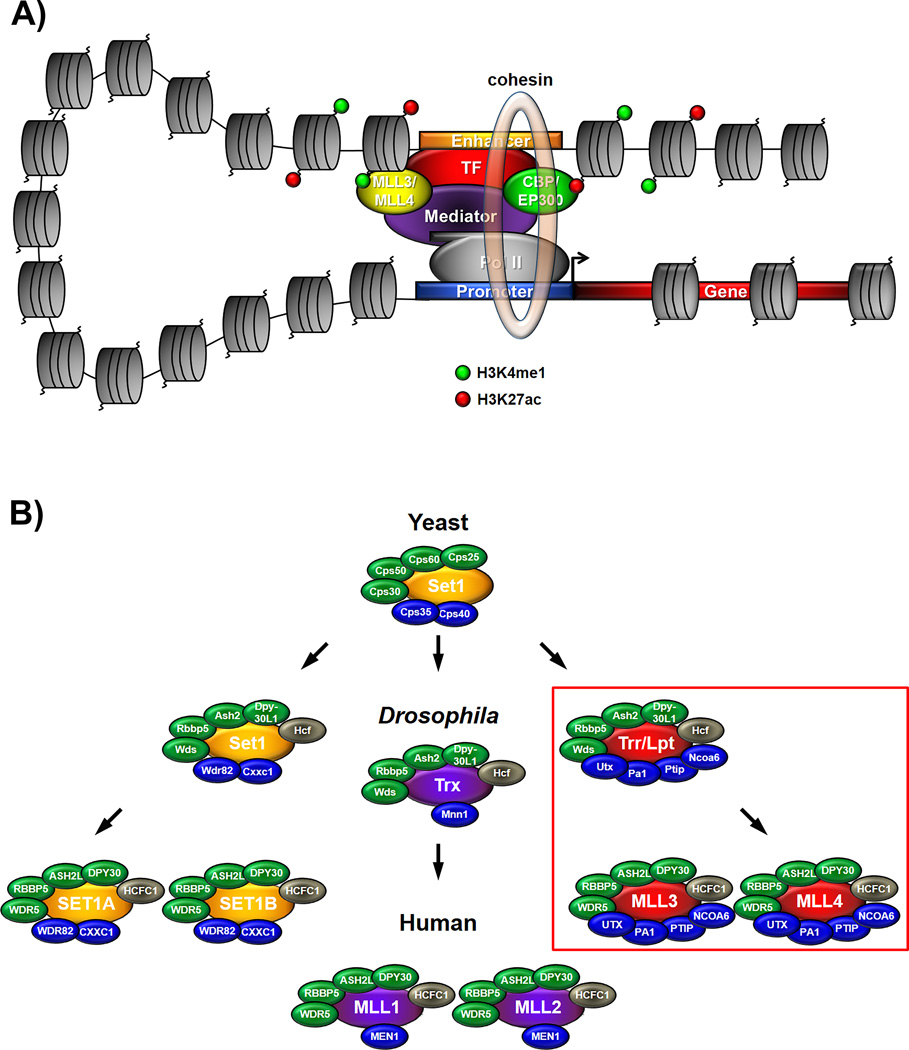Figure 1.
A: Factors involved in enhancer-promoter interaction and communication. Tissue-specific transcription factors (TF, red) recruit co-activators to enhancers which often constitute chromatin-modifying proteins such as the histone H3 lysine 4 (H3K4) monometyltransferases MLL3/KMT2C or MLL4/KMT2D (yellow) and the histone H3 lysine 27 (H3K27) acetyltransferases CBP or EP300 (green). MLL3/MLL4 and CBP/EP300 implement H3K4 monomethylation (H3K4me1, green circles) and H3K27 acetylation (H3K27ac, red circles) on enhancers, respectively. Interactions of these enhancer-associated factors with the general transcription machinery at the promoter including RNA Polymerase II (gray) are mediated by the Mediator complex (purple) and further stabilized by the ring-shaped cohesin complex (light brown transparent ring). B: The family of histone H3K4 methyltransferases in yeast, Drosophila and mammals. Core subunits which are commonly shared among all complexes are highlighted in green. Complex-specific subunits are only contained within one out of three branches and are highlighted in blue. UTX/KDM6A is an H3K27 demethylase and constitutes a complex-specific subunit within the Trithorax-related (Trr) branch (red box) while MLL3/KMT2C and MLL4/KMT2D form the catalytic core as H3K4 methyltransferases within the mammalian complexes of the Trr branch.

